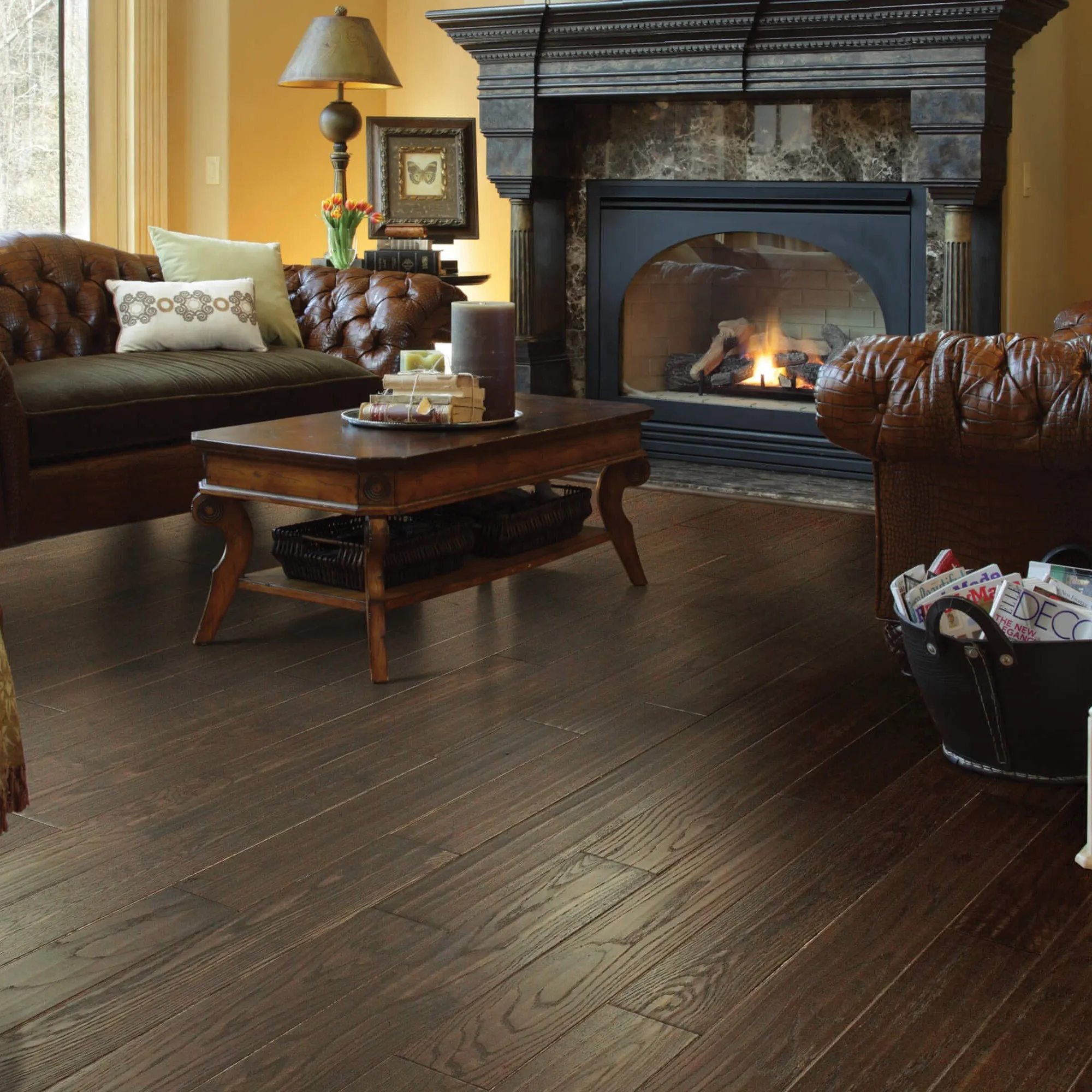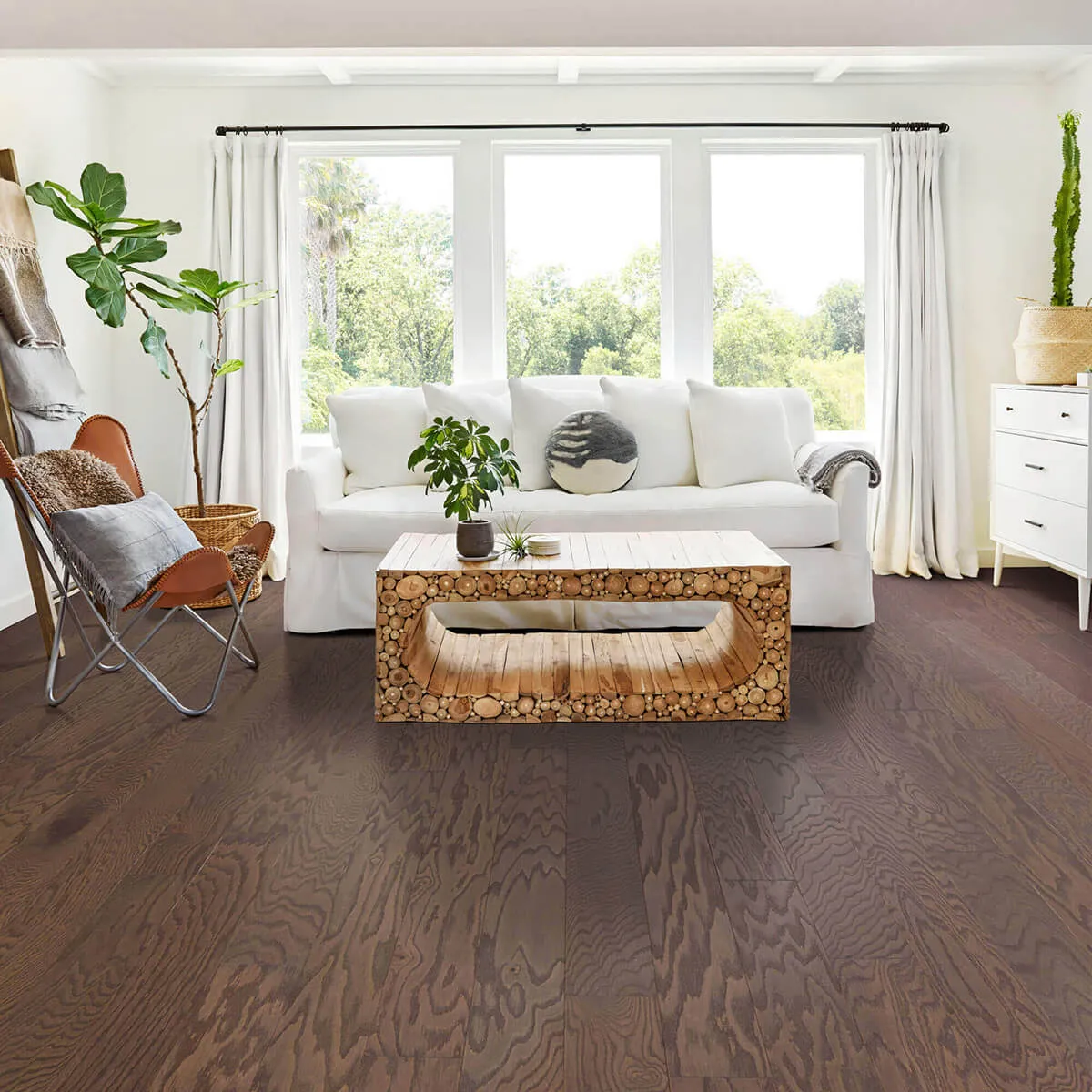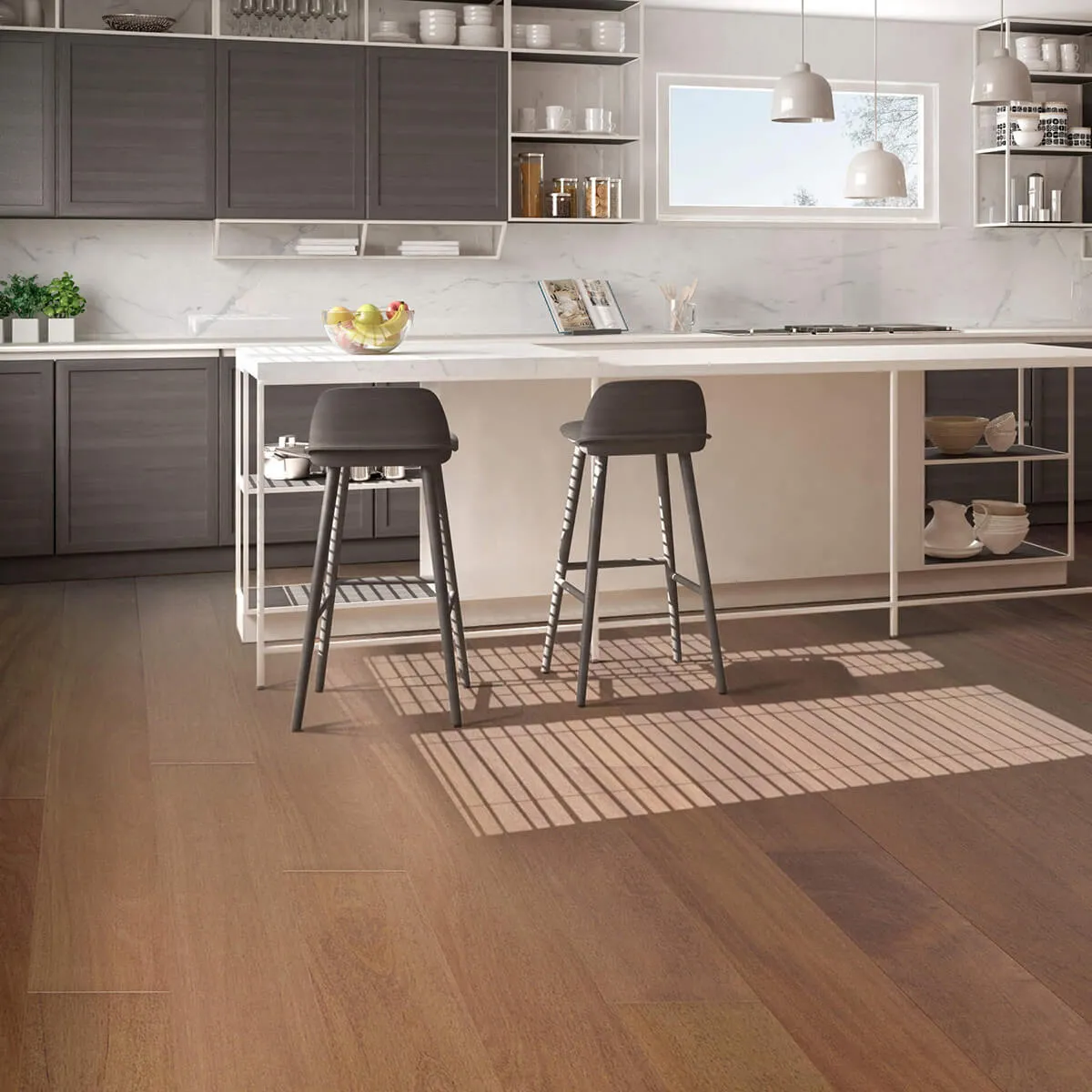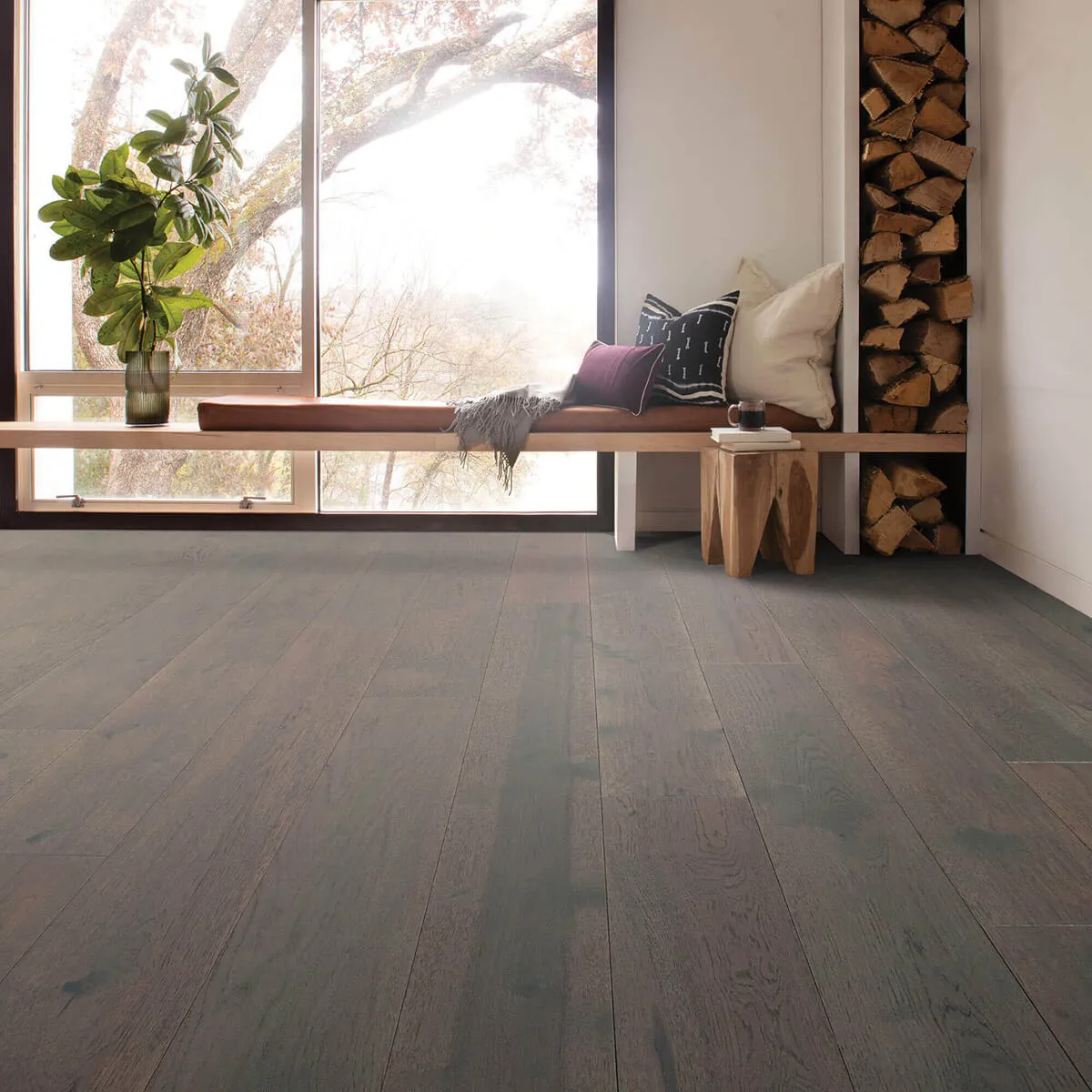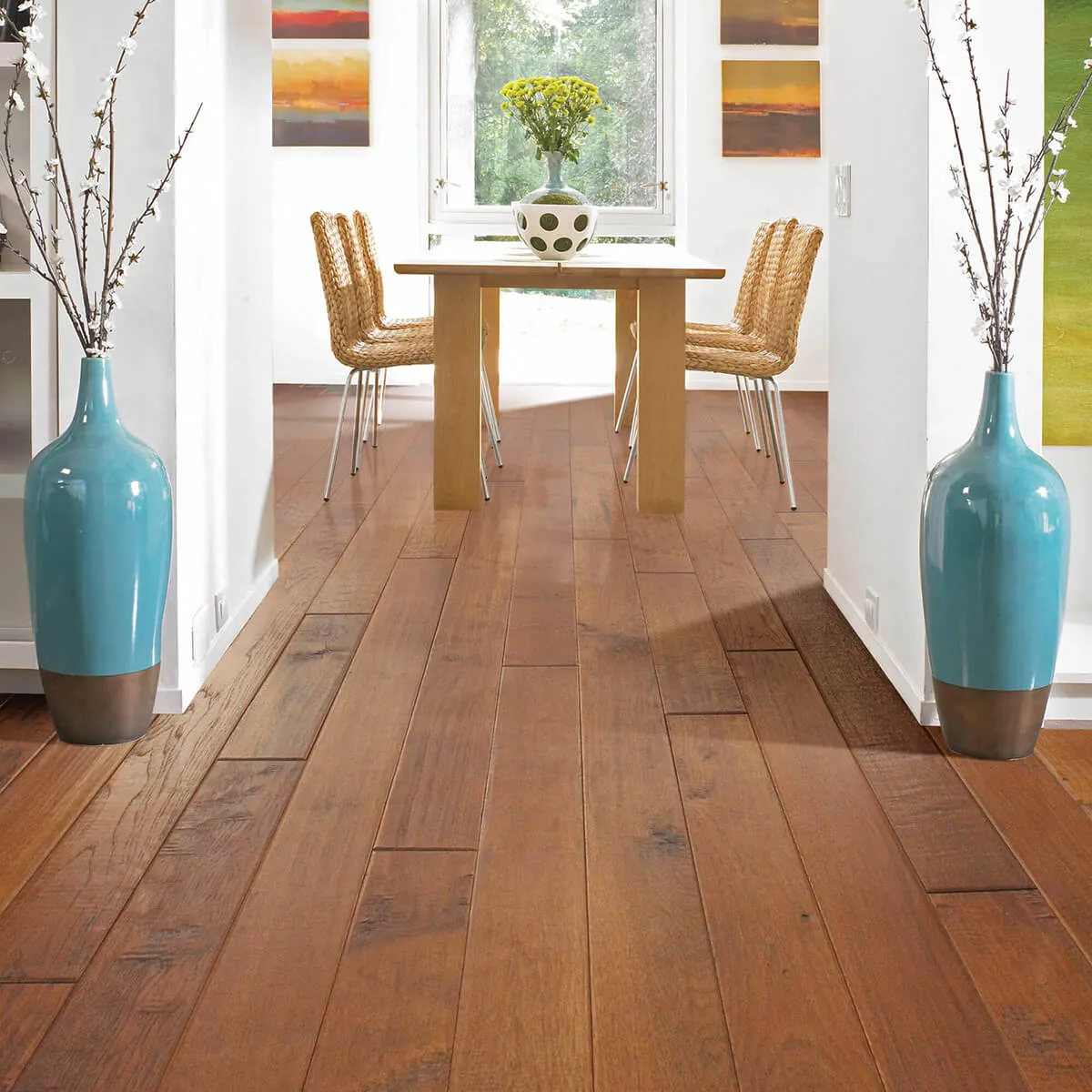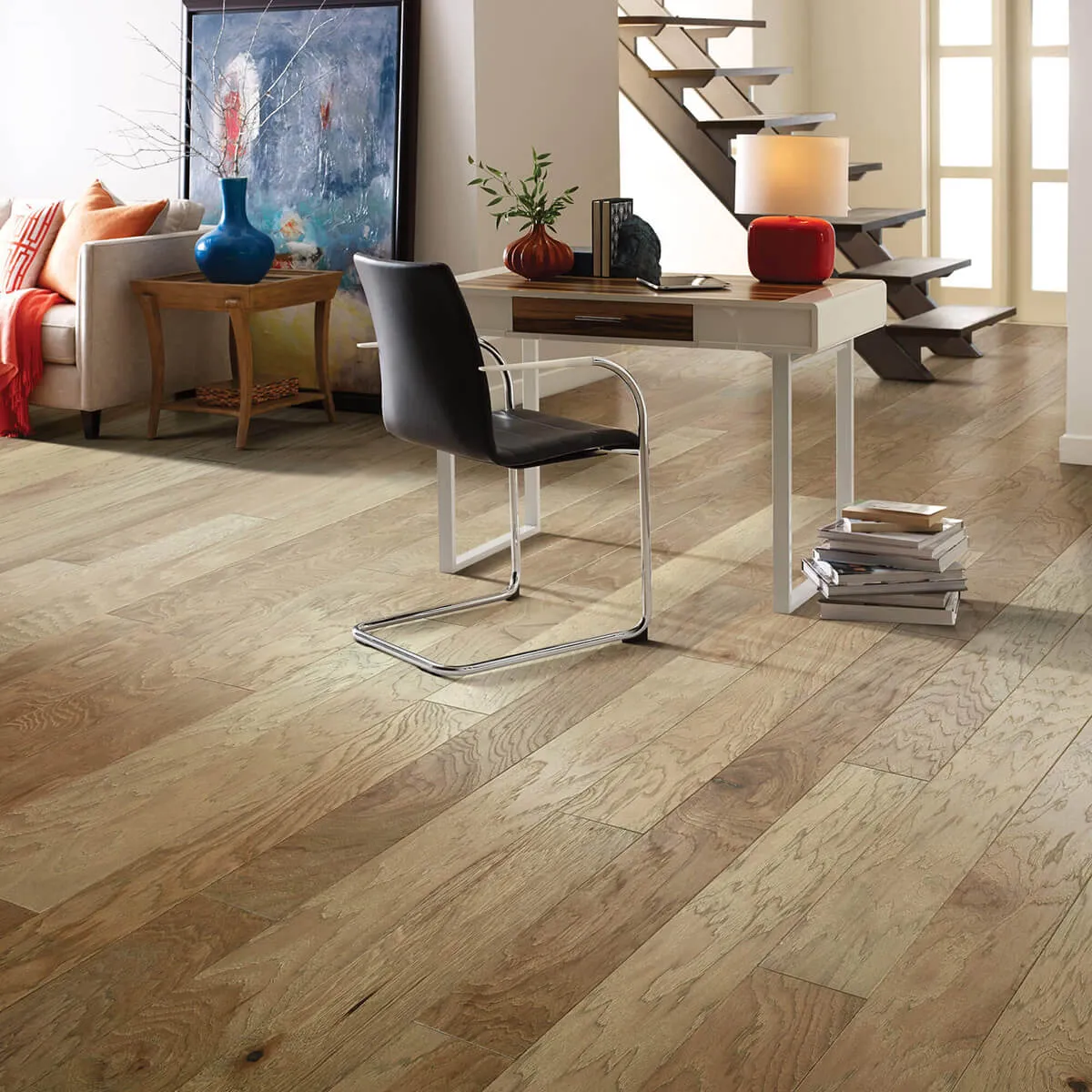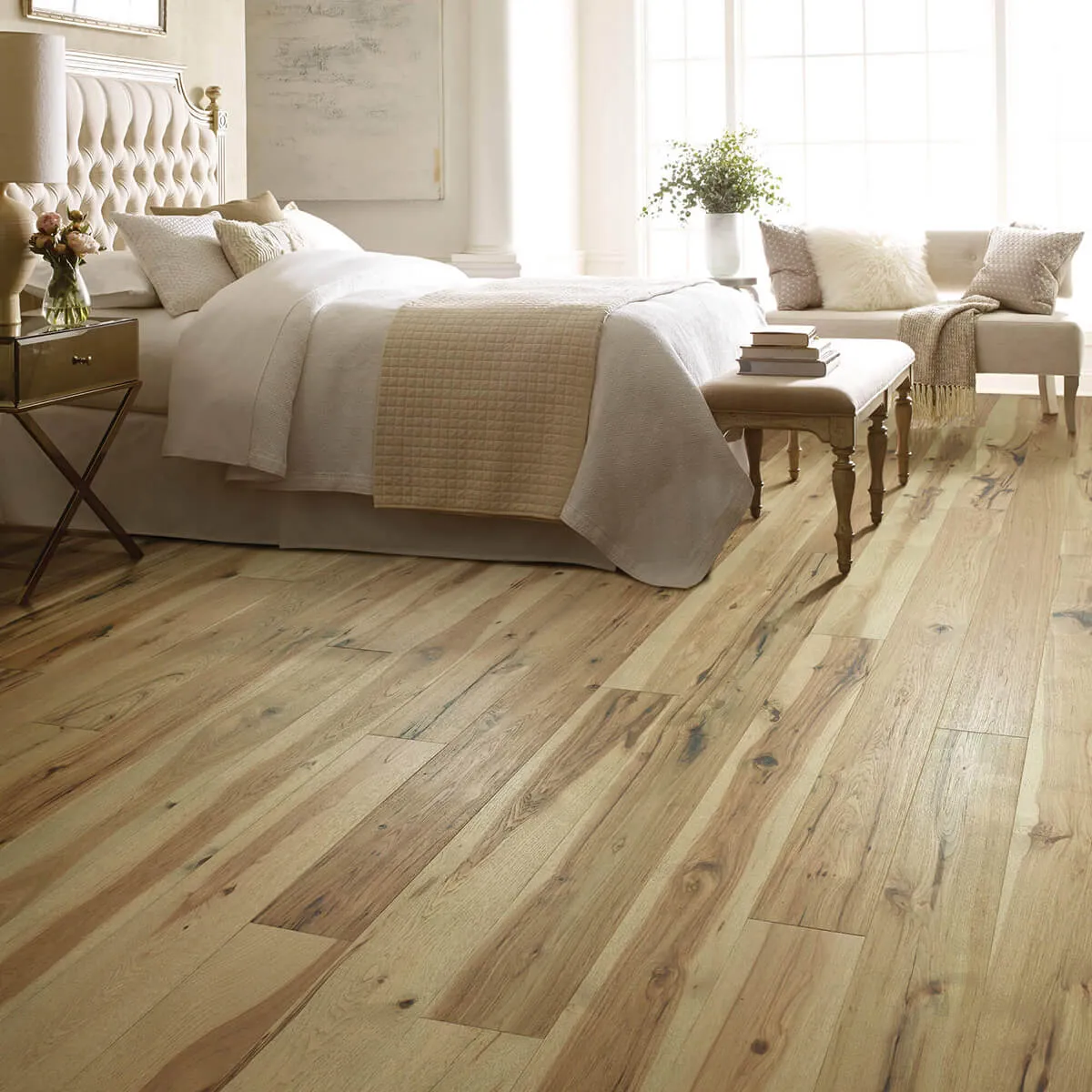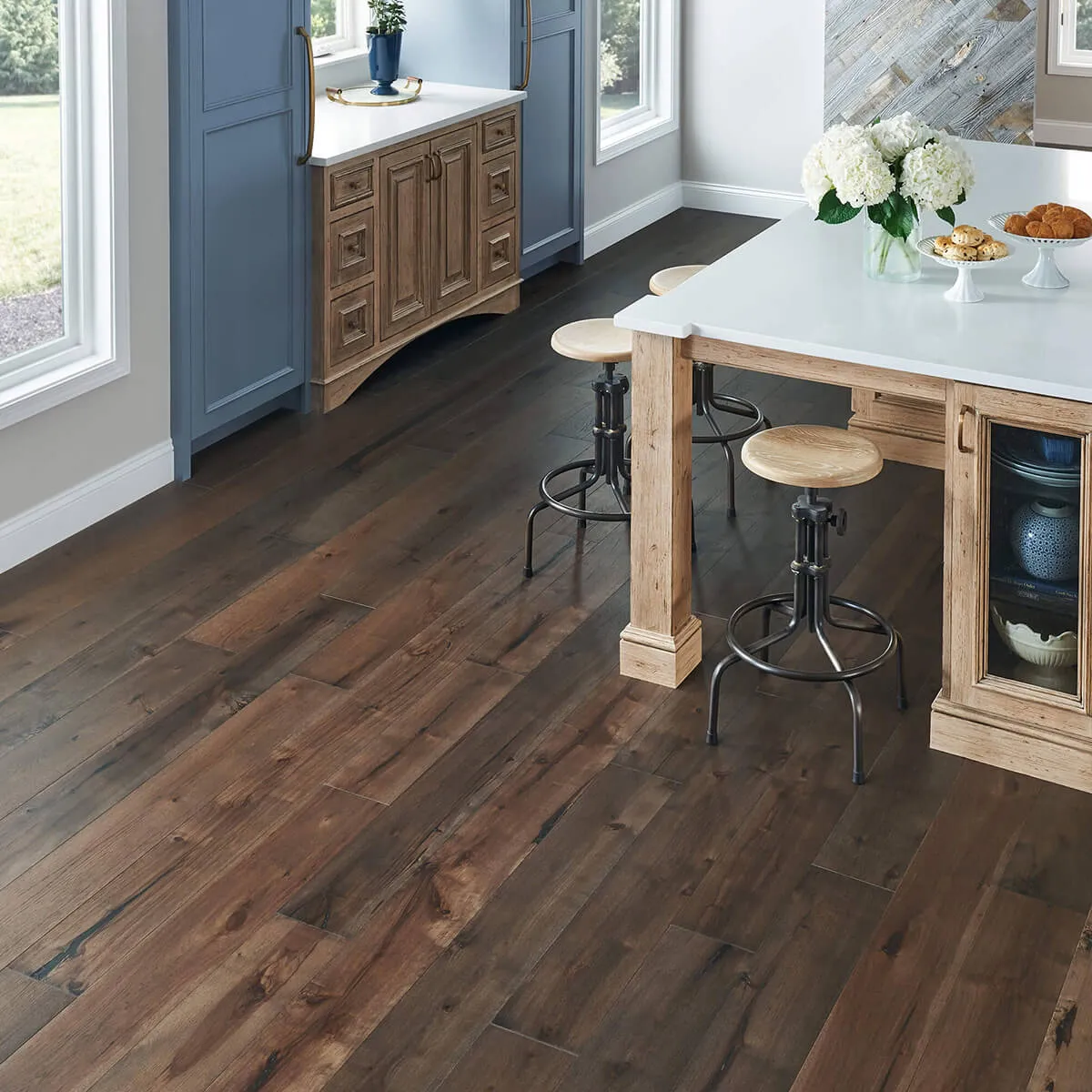Why choose hardwood
Stunning hardwood floors can transform a room with ample natural beauty, a touch of tradition, and inherent warmth. You are able to capture a traditional vision or a hip, trending look with different finishes and mixed shade varieties. The organic markings and characteristics produce a unique feel, and genuine hardwood can be refinished and restored over time for an enduring appearance. Also, hardwood floors are the top preferred surface from prospective homebuyers down the line.
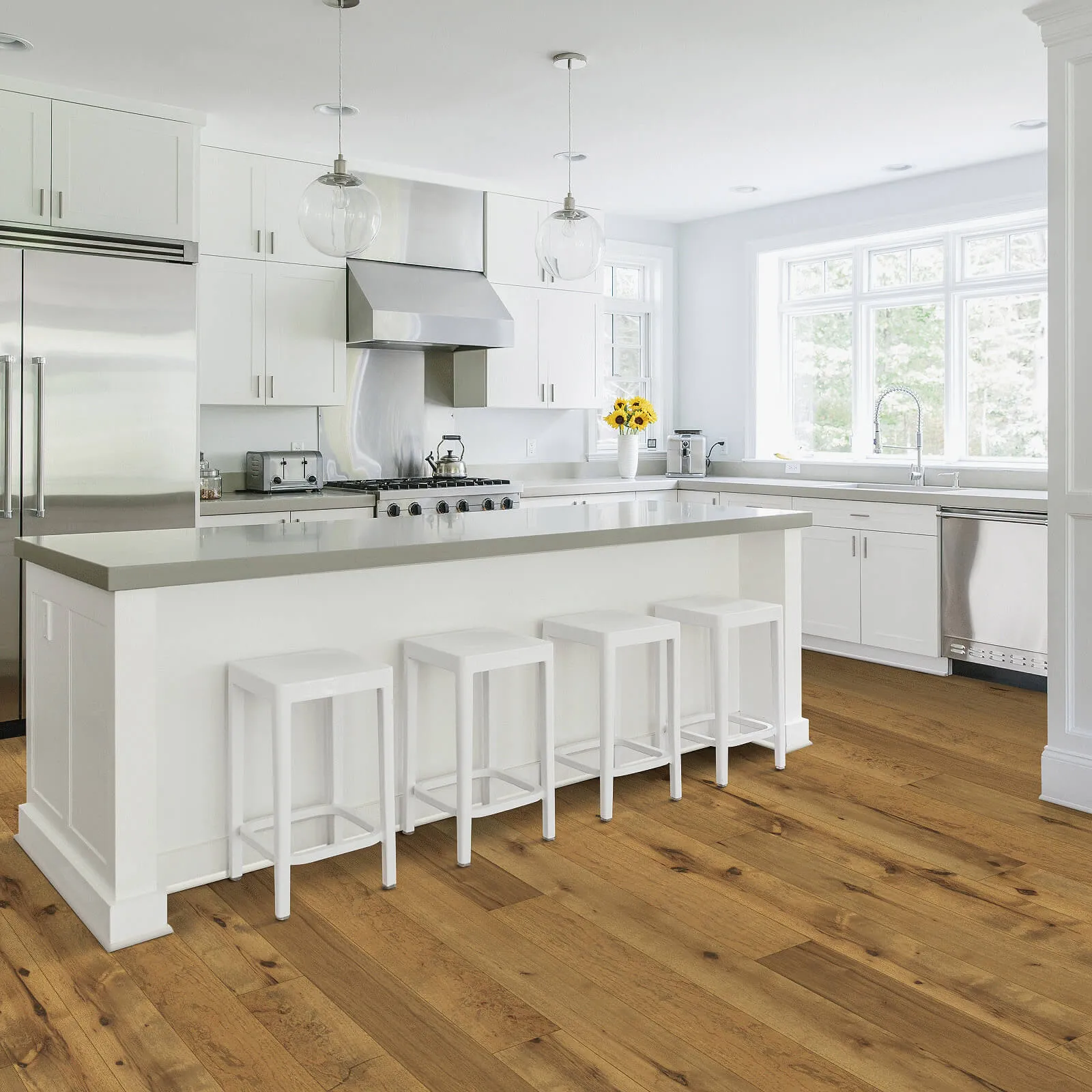
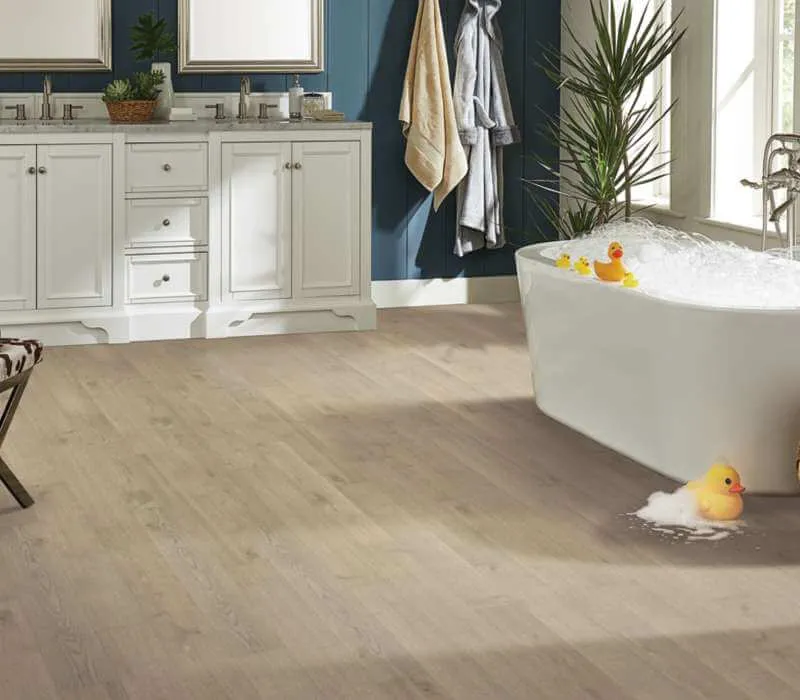
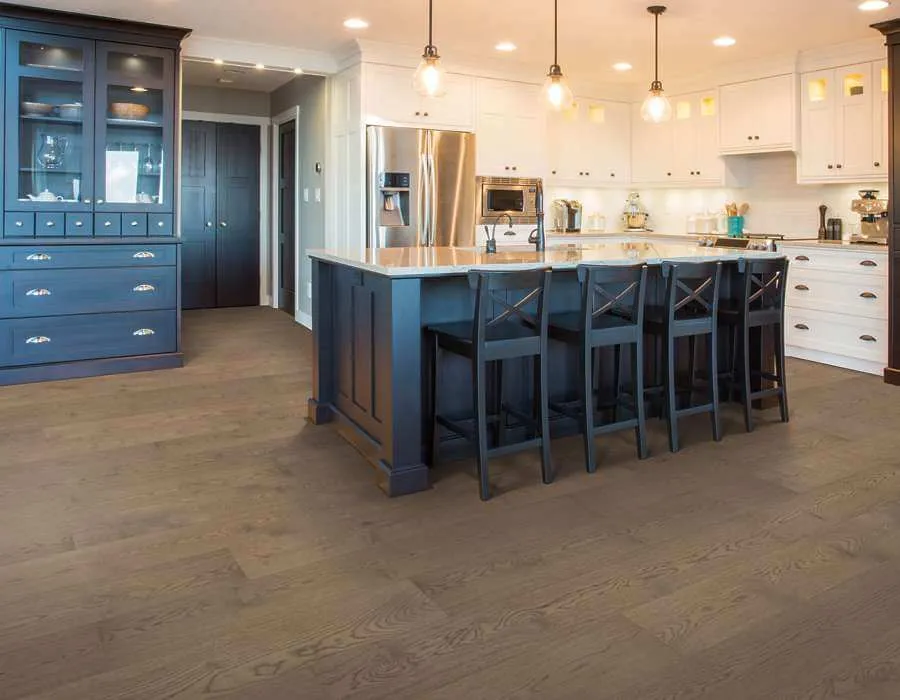
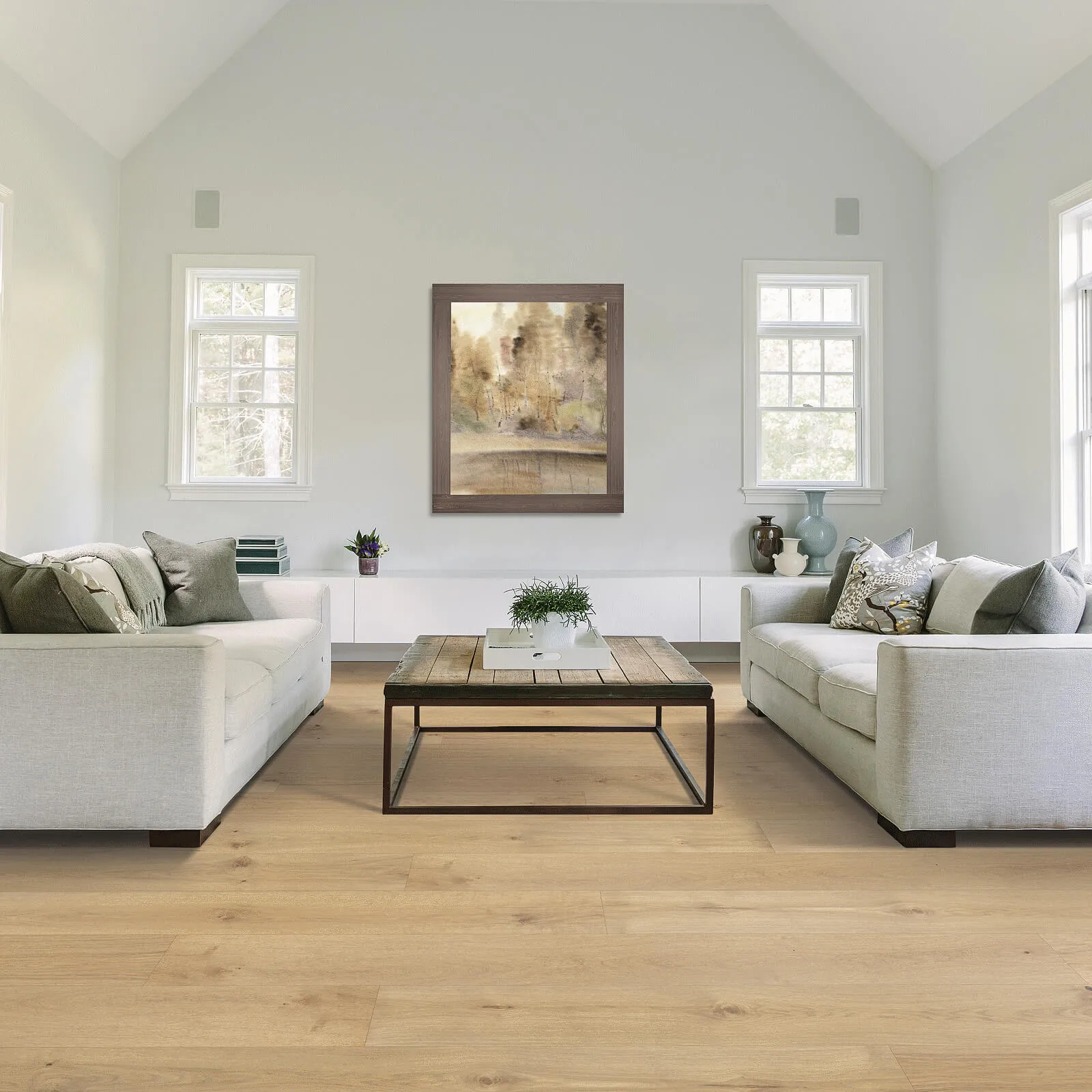
Types of hardwood
Explore different hardwood species, tones, textures, and finishes when selecting between different hardwood types. Each respective hardwood species has a specific hardness rating, which will make some varieties better suited for high-traffic areas more than others. Depending on the vision that you aim to achieve, different finishes such as matte or high gloss will produce different effects with light in the room. We also love exploring different visible graining patterns and textures such as smooth, wire brushed, and hand scraped. Mixed-shade hardwood floors can also create a dazzling effect that helps preserve a clean appearance longer between cleanings.
Hardwood Flooring Scale
Each species of hardwood has a different level of hardness. Some common domestic species like walnut, cherry, and birch are less hard in comparison to other common domestic species like maple, hickory, and oak.
The hardness of solid wood is measured according to a system called the Janka Scale. The Janka Scale gives a good indication of how well a wood species can be expected to withstand dents and dings. The scale is determined by the amount of pound-force required to push a .444-inch diameter steel ball halfway into the wood.
Ratings for both domestic and imported species are included in the scale; however, none of these values apply to engineered wood flooring. While Janka values give a general sense of how hard solid wood is, other factors also contribute to the durability of wood as well. This can include things like how the wood is cut and the finish that is applied to the wood.
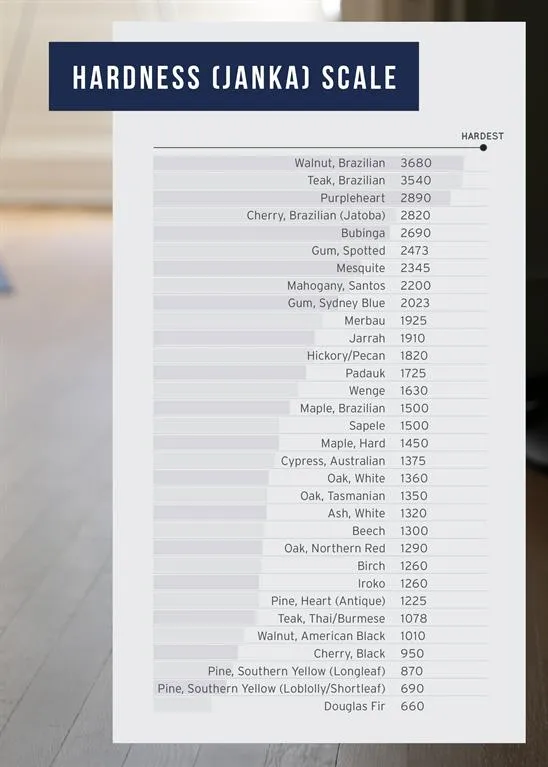
Hardwood Cleaning Tips
Sweeping, dust-mopping, and vacuuming is the best way to care for your hardwood! Regular sweeping with a soft bristle broom, dust-mopping, or vacuuming as frequently as possible will help minimize dirt, dust, and debris build-up before they become abrasive particles. This ensures that your hardwood will experience fewer scratches over time. Disengage any beater bars on your vacuum model before using on your hardwood floors.
You will need to check with your hardwood manufacturer before wet-mopping or using a Swiffer WetJet system on your hardwood. It’s very important to match the proper hardwood-specific cleaning products to your floor beforehand. If your hardwood floors are warranted for mopping, use as little water as possible and ensure the floors dry in a timely manner. You can also use hardwood touch-up pens and kits to minimizes blemishes on your wood surface.
Make sure to always treat spills on your hardwood as quickly as possible to prevent adverse effects and permanent damage from moisture. First, gently lift any solid material with a spoon and paper towels. Then, absorb as much of the liquid spill as you can with additional paper towels. Consult your hardwood manufacturer’s guidelines to find a gentle wood-specific cleaner to treat the area. Now clean the spot with your cleaner and new paper towels or a dry white cloth. You can also use hardwood touch-up pens and kits to minimize blemishes on the wood surface.
Always use mats by entranceways to help remove damaging particles from reaching your hardwood floors. Have residents and guests take off footwear by the door, especially during inclement weather. Use area rugs throughout the home as another layer of protection against spills, dents, and scuffs. With pets in the home, make sure to trim nails and claws to avoid scratching the wood. Also, brush your pets regularly to reduce dander and complete house-training before your pets can spend time on hardwood floors.
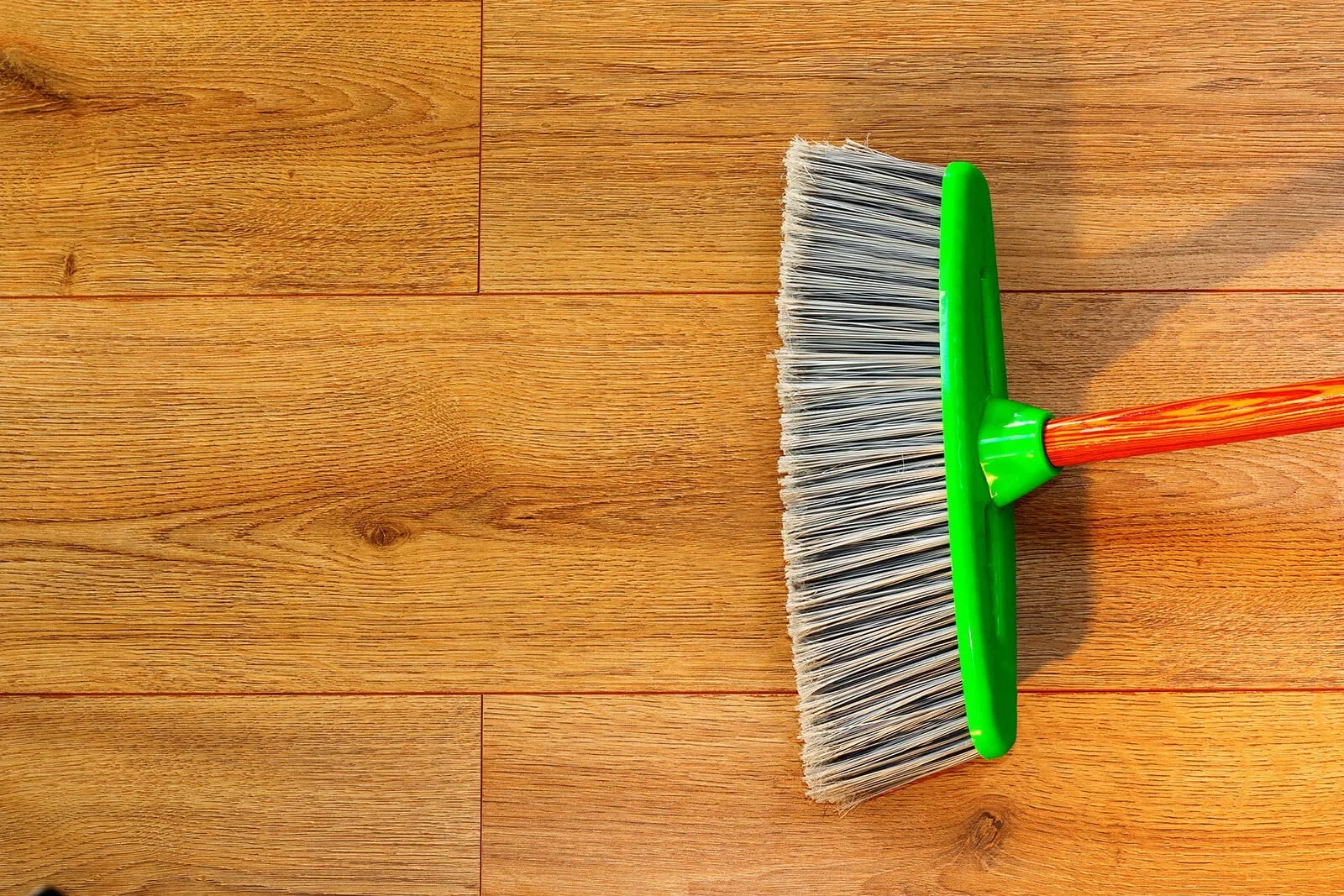
Remove all furniture, furnishings, electronics, and wall hangings from the rooms receiving new hardwood, as well as the closets. Since hardwood cannot be installed over existing flooring, the current floors need to be removed and disposed of entirely. Depending on the new hardwood height, you may need to take doors down and shave the bottom to ensure full range of motion. Any imperfections in the subfloor will need to be repaired before installation. Once your subfloor is assessed by the installation crew, bring your hardwood planks in the room to acclimate to your space for 2-3 days before installation.
On hardwood installation day, you will need to be on hand to answer questions that arise for your crew during the process. Specify an area for the installation crew to keep saws and other dangerous tools, as well as saw planks as needed. Keep all children and pets away from the installer’s work area and rooms receiving new flooring. This is the time to ask your installation crew any questions about your new hardwood!
Once your new hardwood planks are down, your installation crew will advise you on how long you need to wait before using the room. Once you have waited for the specified amount of time, always return furniture by either lifting it or using proper moving equipment with rollers. We also recommend using felt pads under heavy furniture legs to reduce impact on the floor.







